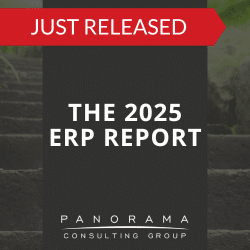Did you know organizational change is the number one reason for employee burnout and stress?
If it seems your employees aren’t able to absorb all the organizational changes you’re implementing, then your organization might be experiencing what’s known as change saturation.
Don’t worry if you’re not familiar with this term. Keep reading to learn all you need to know about this all-too-common phenomenon.
What is Change Saturation?
Change can be hard, so it’s not surprising that employees typically don’t want things to change in the first place.
When things inventively do change, there is a tipping point at which employees can no longer absorb any more changes, and this is what’s called change saturation.
Just as a sponge can only soak up so much water before it becomes drenched, your team members can only take in a certain amount of information and make so many behavior changes within a certain time frame.
For this reason, you don’t want to implement too many changes at once, regardless of how willing your employees seem or strong your change management capability is. What is change management? It is the process of looking at the human side of the project.
Change Management Case Study
The client recognized their need for more comprehensive change management, so they asked us to fill in the gaps. We developed a robust communication plan to supplement the vendor’s communication approach.
Signs of Change Fatigue
So, how can you know if your workforce has reached this point of saturation? Luckily, there are signs you can identify.
For one, disengaged and apathetic employees are a sure sign your team feels there’s been too much organizational change. Have you noticed that everyone is running for the door at 5 p.m.? Are your employees disengaged during meetings?
Signs of stress, such as more complaining than usual, are also indicators of change saturation.
If you’ve spotted any of these signs, we recommend critically looking at the amount of change you’re simultaneously introducing.
That’s not to say you can’t communicate about several change initiatives at once to inform everyone what’s coming down the road. We’re just saying you don’t want to actually roll out multiple large-scale changes at the same time.
5 Tips for Preventing Change Saturation
You know you must change and grow as an organization, but you also know you don’t want your employees disengaged and stressed. What can you do about this conundrum?
Here are five tips for avoiding change saturation during your next big project, whether it’s an ERP implementation, SCM implementation, or digital transformation:
1. Only Pursue a Certain Number of New Projects or Changes at Any Given Time
If you’re noticing signs of fatigue and stress in your employees, it’s time to triage the situation.
You might be able to move some projects to the back burner. Which projects are truly important to achieving your overall business goals, and which are more discretionary? Which will bring quick wins with significant impact, and which are time-consuming and less impactful?
If you’re using an effective business process reengineering methodology, you’ll likely end up using a payoff matrix to prioritize process improvements. A similar method can be used for prioritizing changes in general.
Essentially, you want to choose the most important changes and focus all your energy on completing them before moving on to the next . . . which leads us to our next point . . .
2. Prioritize Each Project and Change Using a Structured Format
Now that you have a plan for each new initiative, you need to prioritize the order in which you implement them.
When everything is important, nothing is important. Your team members need to know where to focus their efforts so they can dedicate the right amount of effort to achieve project goals.
As you determine which changes will be rolled out in which order, it can be helpful to outline what resources will be needed. Will you need new funding? Will you need to coordinate two different departments to work together?
When you know this information, you can make better decisions about when to focus on certain initiatives and when they need to be put on the back burner.
For example, do you need HCM software as soon as possible or can you move this functionality to a later project phase?
3. Plan Now, Implement Later
As you move forward, you need to know how you’ll manage new ideas and opportunities for improvement as they arise.
While business is all about change, this doesn’t mean you need to react and immediately implement something the minute it presents itself. On the contrary, you should wait to act on most ideas, while planning for them in the meantime. This way, you’re ready to implement them when the time is right.
4. Define the Finish Line and Stick to it
Some projects will naturally last longer than anticipated. However, if you find that the majority of your projects experience delays and scope creep, you need to focus more on your project goals and let them guide every decision.
If these goals are unclear, we recommend quantifying the specific ERP business benefits you hope to achieve. Then, remind the ERP project team that they should focus on achieving these benefits and not get distracted with low-value process improvements, for example.
When your employees see a project is resulting in measurable benefits instead of dragging on and on without visible progress, they are less likely to become fatigued.
5. Diligently Monitor Your Employees for Signs of Change Saturation
While change is planned and delegated at the organizational level, it is most intensely felt at the personal and individual level. After a project phase is rolled out, individual employees are the ones who must adapt their behaviors and workflows.
As such, you should continually watch out for the signs outlined in the previous section. If you start to notice patterns in the way your team members are interacting with coworkers and managers, it’s time to look at how much change you’re introducing at once.
Just because you only have one project going on, doesn’t mean you’re in the clear. It’s about the amount and degree of change, not necessarily the number of projects.
Stopping Change Saturation Doesn’t Have to Stop Your Next Project
Avoiding change saturation doesn’t mean squishing innovation; it just means you need to prioritize and pace yourself. If you approach your projects wisely, you can avoid employee burnout.
As your greatest asset, your employees are the force that enables ERP implementation success. Their energy and enthusiasm are the fuel for ERP benefits realization. This is why you need to be judicious in introducing change, while equipping employees with the aptitude to effectively adapt.
If you’re struggling to prioritize various changes, our change management consultants can help you scope and schedule organizational changes based on your employees’ level of change readiness and your bandwidth and budget for organizational change management. Contact us below for a free consultation.













